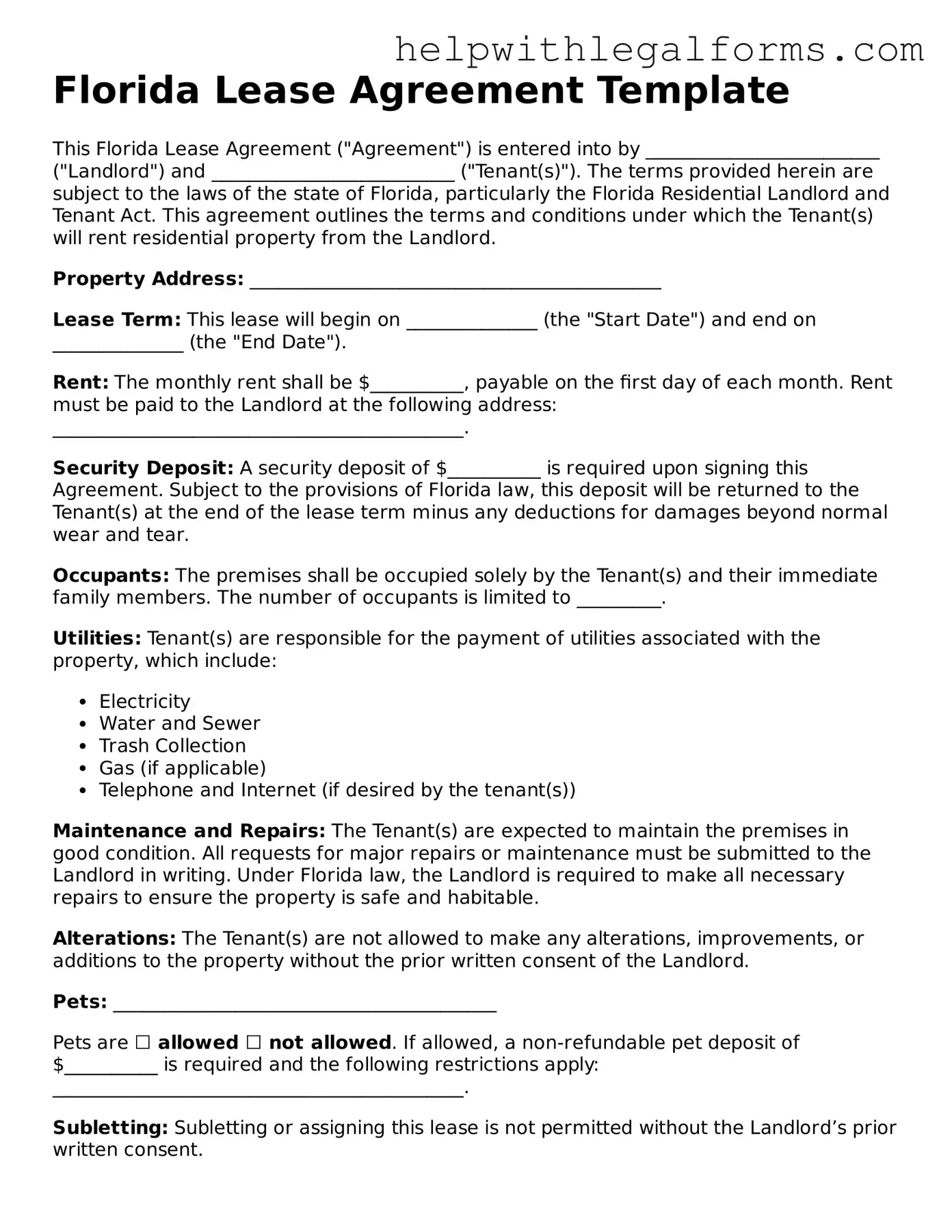Florida Lease Agreement Template
This Florida Lease Agreement ("Agreement") is entered into by _________________________ ("Landlord") and __________________________ ("Tenant(s)"). The terms provided herein are subject to the laws of the state of Florida, particularly the Florida Residential Landlord and Tenant Act. This agreement outlines the terms and conditions under which the Tenant(s) will rent residential property from the Landlord.
Property Address: ____________________________________________
Lease Term: This lease will begin on ______________ (the "Start Date") and end on ______________ (the "End Date").
Rent: The monthly rent shall be $__________, payable on the first day of each month. Rent must be paid to the Landlord at the following address: ____________________________________________.
Security Deposit: A security deposit of $__________ is required upon signing this Agreement. Subject to the provisions of Florida law, this deposit will be returned to the Tenant(s) at the end of the lease term minus any deductions for damages beyond normal wear and tear.
Occupants: The premises shall be occupied solely by the Tenant(s) and their immediate family members. The number of occupants is limited to _________.
Utilities: Tenant(s) are responsible for the payment of utilities associated with the property, which include:
- Electricity
- Water and Sewer
- Trash Collection
- Gas (if applicable)
- Telephone and Internet (if desired by the tenant(s))
Maintenance and Repairs: The Tenant(s) are expected to maintain the premises in good condition. All requests for major repairs or maintenance must be submitted to the Landlord in writing. Under Florida law, the Landlord is required to make all necessary repairs to ensure the property is safe and habitable.
Alterations: The Tenant(s) are not allowed to make any alterations, improvements, or additions to the property without the prior written consent of the Landlord.
Pets: _________________________________________
Pets are ☐ allowed ☐ not allowed. If allowed, a non-refundable pet deposit of $__________ is required and the following restrictions apply: ____________________________________________.
Subletting: Subletting or assigning this lease is not permitted without the Landlord’s prior written consent.
Default and Eviction: If the Tenant(s) fail to comply with any term of this Agreement, it may result in legal action and possible eviction under the guidelines provided by Florida law.
Notice: Notices under this Agreement must be given in writing and will be considered delivered when received in person or three days after being mailed to the address specified above or to any new address provided by either party.
Governing Law: This Agreement shall be governed by, interpreted, and enforced according to the laws of the State of Florida.
Signatures: By signing below, both the Landlord and the Tenant(s) agree to all terms and conditions outlined in this Florida Lease Agreement.
Landlord Signature: ____________________________ Date: ______________
Tenant Signature(s): ____________________________ Date: ______________
